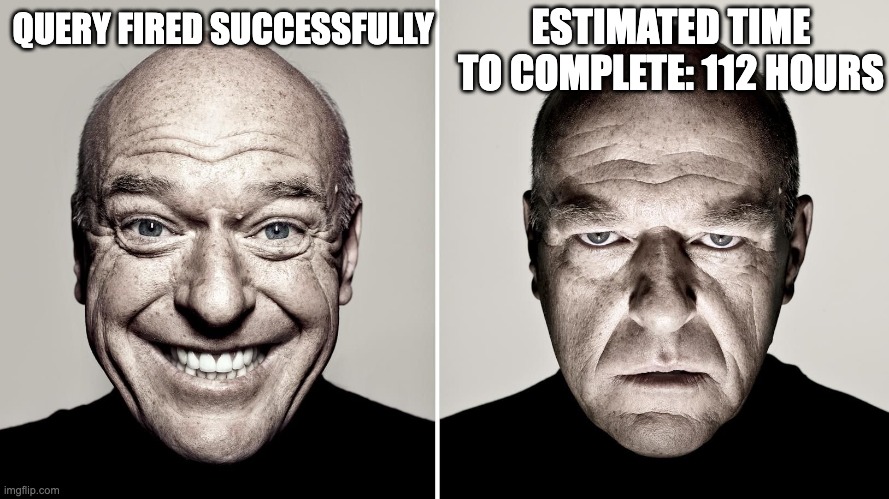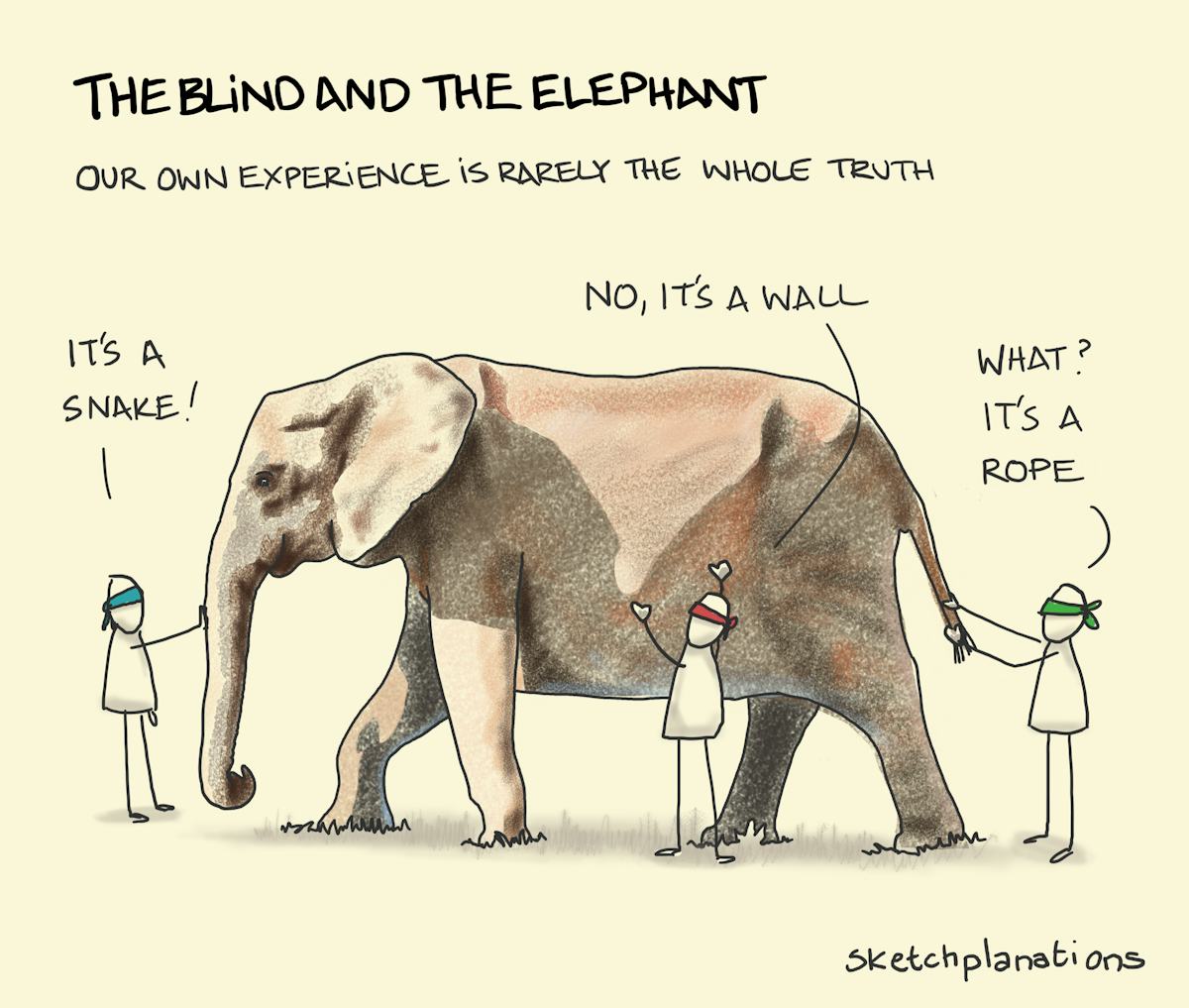PerceptInsight— Build Better
Back in the day when I was just starting out, most software applications were deployed on prem. If you worked for a company that built a product meant to provide a service that a customer was willing to pay for, deploying your software would involve visiting the client’s location. Looking back, I find the level of inefficiency with this approach simply mind boggling. The tech department was referred to as "IT" and IT was responsible for both building and deploying software. Meanwhile, other departments like marketing, strategy, sales, business development, operated in silos with limited communication and yet at a higher level of abstraction, the dots would somehow mysteriously connect.

Initially, important metrics were dumped into databases (largely Siebel, Oracle) and when the data volumes expanded, data warehouses (thanks Netezza you helped) became more prevalent. As the data sizes grew, talented programmers proficient in C/C++ came up with elaborate and complex data structures, often storing this information as binary data for retrieval. Needless to say, the reliability and predictability on those systems weren't necessarily on par with those of today (read: major system degradations).
Insights would be generated as a result, which would then be shared across departments. This could take days(you read that right!) and sometimes weeks if something broke midway. 
Despite the reasonable amount of information generated through this process, decision making would often be fragmented and delayed because the time it took for the information to be delivered, which resulted in dated or “lossy” data. Customer behaviours would evolve and show newer patterns by the time the "insights" made it to the departments. 
Much has changed since, with rapid advancements in technology. Data data warehousing has evolved, with data emerging as the "new oil” of the digital economy. "Big data" has captured everyone's imagination, ELT (Extract, Load, Transform) processes became popular with the advent of the cloud. And today we are in the era of "unbundling the data stack" i.e. enabling visualization, transformation, storage, collection, governance.

From it taking days to fetch a GB of information to generative AI skimming petabytes of information and generating insights in a matter of seconds, we have indeed come a long way.
These advancements have in fact led to user behaviour data shaping products which was the opposite earlier
Take Amazon's personalised recommendations for example. This game changing feature was was a delight for customers to use because of clever interspersing of Amazon’s business cases with insights from user behavior and technology (recommendation algorithms) they built. Similarly, Uber has been using real time freight analytics to significantly boost the utilization of their fleet. The performance impact of each vehicle is visible to drivers and fleet operators and leads to promising results. In fact, such is Uber's strength in data that even though UberEats entered an already saturated food delivery market, they leveraged their existing data from the taxis, and streets to make a significant dent. Coca cola uses customer behavior trends and geographical nuances to strategize their advertisements.
Not every company is able to apply advanced analytics
The information asymmetry that existed (within departments) is still very much a reality. Companies building products who do not have the wherewithal or access to technology advancements like that of Uber or Amazon, continue to miss out. This lack of democratization of data is not necessarily because of a lack of intent but because of unavailability of proper tools which leads to some degree of guess work while building solutions. Sometimes these tools are inherently complex and while trying to simplify the complexity in business processes they manage to confuse the user. The irony is quite stark.
There was a recent backlash on social media about google analytics


The data technology revolution should be leveraged a lot better
The most successful companies IMO are those that leverage synergies in product, marketing, businesses and customer behaviors implicitly. Quite simply, these lead to better products, marketing and business effectiveness because they humanise digital experiences.
The open secret in modern marketing is that brands do not hold the narrative anymore but consumers do.
Helion for eg uses enterprise grade insight marketing to target their audiences
Also the more complex your product becomes the more the need for spatial analytics. This forbes article captures the impact a good insight driven business can have when it has access to the right tools.
Surprisingly though, the tools that exist today either optimize for static marketing or for product insights. They rarely connect the dots.
For e.g, often the CRM messages from most sites seem devoid of customer context. There isn't enough connect, they almost seem to be going through the motions and every app tries to do the same, leading to customer fatigue. It’s the incredibly excessive amounts of sameness that leads to significant degradation in marketing and business performance.
Or for that matter there could be business constraints that impact marketing and if they were handled better it might lead to a much better yield but then yield management isn’t always tightly tied to business constraints.
What is required as this HBR article also captures quite succinctly is insight driven marketing for businesses to create significant impact.
Also one of the biggest challenge with organisations big or small is the fragmentation of data. Marketing looks at a different set of data, product has it's own definitions and metrics whilst buinsess teams might be operating at a different data altogether.
So when we started researching for a tool that overcame these problems it did not take us long to realise that such a tool in fact did not exist. That is when percept insight (pi) was conceptualised.
Enter Percept Insight
The fundamental tenets of pi are the following
- Granular observability
- High fidelity attributions
- Emerging trend detection
- Real time actionability
- Dynamic segmentations
- Simplicity in usage
OK, enough greek, let's break this down further:
Granular observability : pi gives visibility and the ability to understand each and every consumer action independently.
High fidelity attributions: pi offers the capability to clearly attribute a qualified lead and observe its behaviour over time. Also the capability to do negative correlations and understand feature cannibalisation
Emerging trend detection : pi has the ability to understand trends and can create alerts basis those trends. For eg a trend could be that the conversion is going down by a certain percentage or that the number of visitors have been going up at a higher rate than usual. Also these trend detections are near real time.
Real time actionability : Using pi configure communication messages near real time basis user actions, and by intersecting them with trend detections thus significantly increasing marketing effectiveness and conversions.
**Dynamic segmentations ** : Enable creation of segmentations basis real time user behaviour. Users dont necessarily demonstrate constant behaviours, but most tools today allow for only static segments. Break away from the norm and create dynamic segments basis what a particular cohort of users are doing at that give point in time.
Simplicity in usage: pi provides conversational analytics that is powered by generative AI. This allows for super fast onboarding and getting to insights without the need to actually understand the nuances of the tool. Get insights in seconds by having conversations with percept. Just ask.
A case study
Client opens percept and asks about user conversion funnel using the conversational analytic feature , like so

Gets to understand the funnel view

Decides to configure a live real time campaign basis current user behaviour

The case study above depicts the power of percept insight where you don't necessarily have to rely on static customer segments but basis your business goals the client can take actions basis real time insights.
